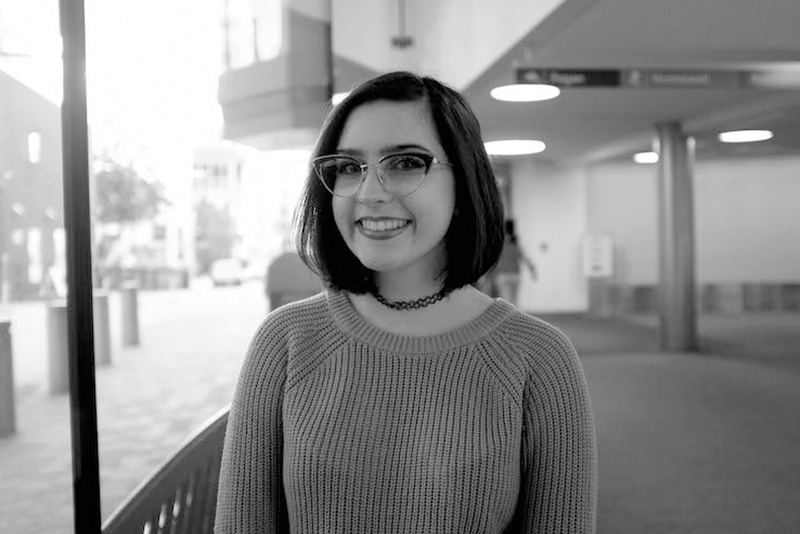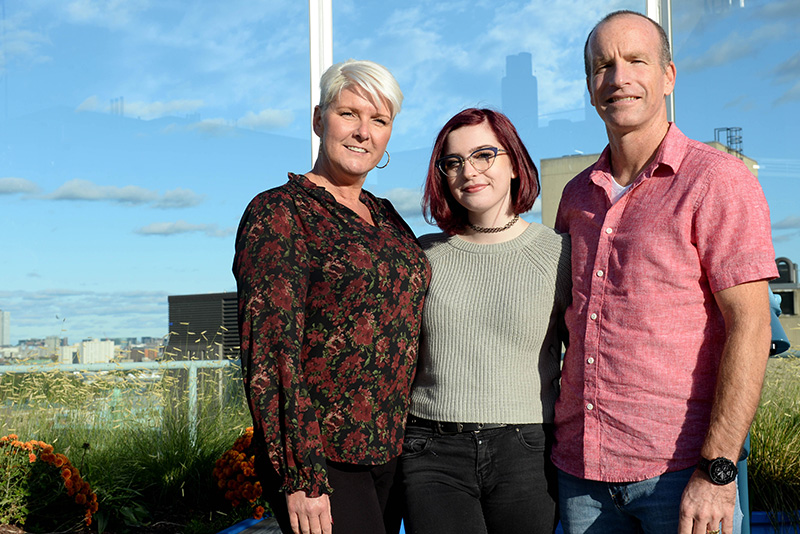Interventional pain techniques bring Sadie relief

It’s hard for Sadie Doherty and her parents to remember a time when she hasn’t been in pain. Now 17, she had gastrointestinal problems “right off the bat,” says her father, Mike. Testing at Boston Children’s Hospital eventually revealed the presence of eosinophils — white blood cells that can indicate an allergic reaction — in both her esophagus and colon. “When the results came back, we realized that she was allergic to everything in her lunchbox that day,” remembers Mike.
While Sadie’s eosinophilic esophagitis was treated with dietary changes, her colon was a different story. Also diagnosed with eosinophilic colitis, she experienced abdominal swelling. Worse, extreme pain forced her to miss most of sixth grade as she moved only from her bed to the couch and back again. The smallest movements — even a laugh or a hug from her parents — seemed to trigger it. The narcotic drug morphine barely took the edge off.

A life-changing meeting leads to pain treatment
During one of many endoscopies to determine the source of her mysterious pain, Sadie jumped off the exam table — even anesthesia couldn’t keep her from feeling the sensation of the scope in her esophagus. Afterward, Dr. Eitan Rubinstein, the physician performing the test, pulled her parents aside. “He told us that something else was going on that he couldn’t identify and referred us to the Pain Treatment Center,” says Mike. “If it wasn’t for Dr. Rubinstein, I’m not sure we would have found the center.”
There, Sadie’s life changed — almost overnight. After meeting and examining her, Drs. Pradeep Dinakar, Neil Schechter, and Samuel Nurko had good news. “They told us, ‘We know what this is, and we can help,’” says Mike. What it was turned out to be anterior cutaneous nerve entrapment syndrome, or ACNES. In this condition, nerves in the abdominal wall become trapped, often resulting in severe pain.

Always looking for new chronic pain treatments
Most pain relievers are ineffective at treating ACNES-related pain. For this reason, Dr. Dinakar, director of the Pediatric Interventional Pain Program, collaborates with surgeon Dr. David Mooney to perform minimally invasive interventions such as abdominal wall blocks, followed by a neurectomy of the entrapped nerves in eligible patients. In Sadie’s case, Dr. Mooney divided the affected nerves in her abdomen, which provided almost instant relief.
But nerves grow back and, over time, Sadie’s symptoms returned, although abdominal injections continued to help treat her ACNES flareups. In addition to her abdominal pain, she developed migraines, which Dr. Dinakar has treated with nerve blocks and Botox injections. She also underwent a nerve release procedure at Massachusetts General Hospital, a surgery rarely performed in pediatric patients. And Sadie has responded well to intravenous lidocaine injections, another innovative treatment. Her family is hopeful that even more options will someday be available for children with debilitating pain.
“Dr. Dinakar and his colleagues are really big on research and always looking for new treatments,” explains Mike, who — through Boston Children’s Miles for Miracles campaign — aims to raise $1 million dollars to help fund this work.

Finally finding answers for pediatric pain
As Sadie enters her senior year of high school, she’s excited for what the future holds. That includes fulfilling her dream of becoming an art therapist, inspired in part by her experiences with Julie Snyder, director of the GI Psychology Service. During Sadie’s many visits to the hospital, Dr. Snyder introduced to her the power of art to help keep her mind off her pain.
But there’s one change Sadie won’t have to make when she turns 18: Dr. Dinakar has vowed to keep treating her for as long as necessary. “Dr. Dinakar and his colleagues are always available to help — it’s like we’re best friends, which I guess we sort of are in a way,” says Mike. “We couldn’t find any answers for Sadie’s pain until we found this team. I don’t know where we’d be without them.”
Get more answers from the Pediatric Interventional Pain Program and learn how you can support your child with chronic pain.
Related Posts :
-

‘Everything fell into place’: Innovative POEM procedure lets Peyton eat without pain
Peyton Reed, 14, is a typical teenage boy: He enjoys tennis, video games — and food. So when eating became so painful ...
-

One day closer: Second opinion for urologic pain changes Iker’s life at last
Like many kids, Iker Guzman enjoys playing with LEGO toys. But there was nothing lighthearted about the day a few ...
-

New possibilities: How Caden learned to manage chronic pain — and found an unexpected path
In October 2020, Caden Deutsch started feeling sick. Although the 17-year-old had been coping with juvenile idiopathic arthritis since he was ...
-

Broken signals: Things you may not know about nerve injury
When Dr. Andrea Bauer talks about nerve injuries, she talks about phone cords. A damaged phone cord transmits staticky or ...





